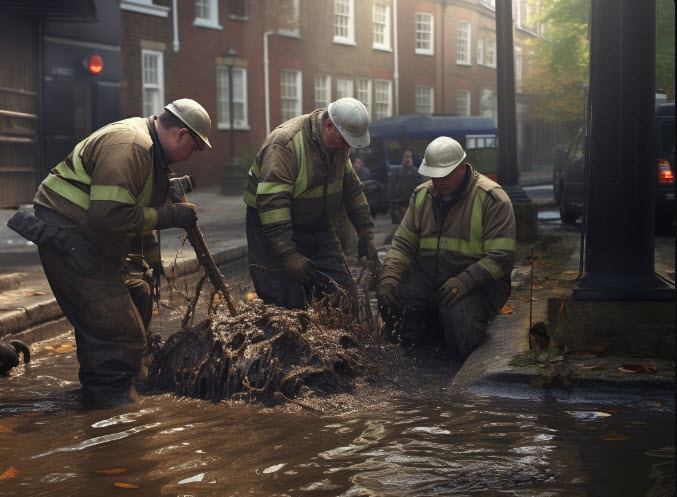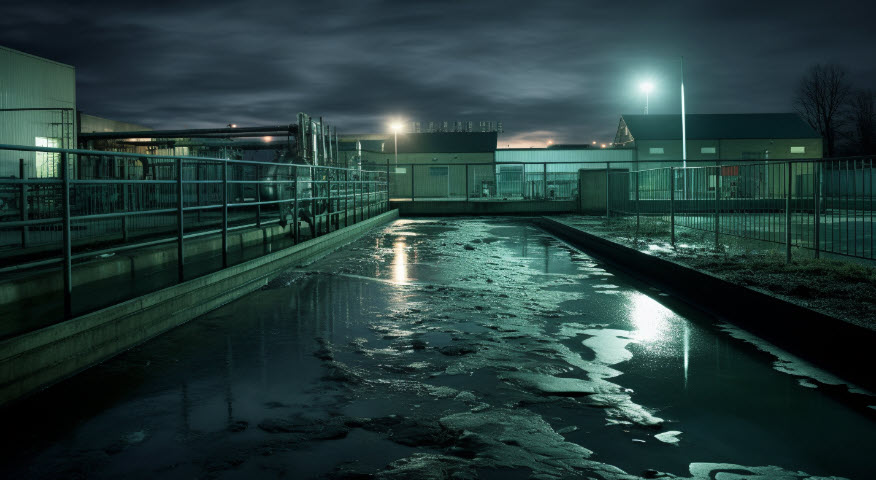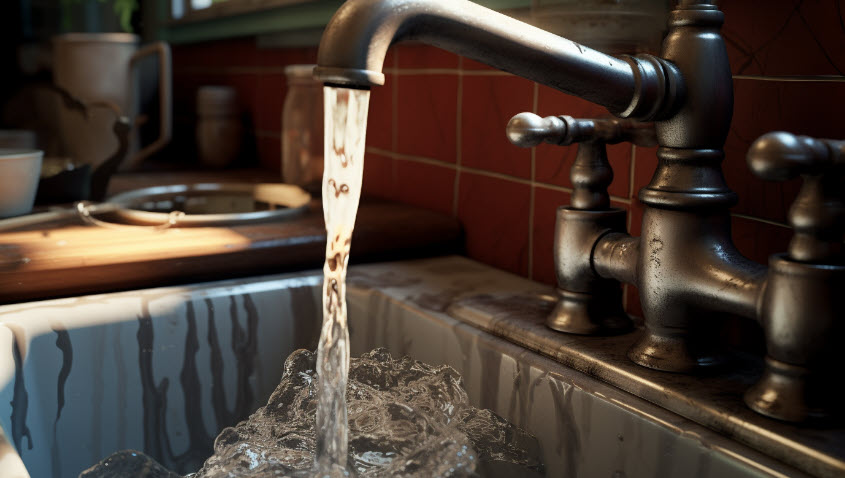Do you really think your tap water is safe to drink? The quality of drinking water in the UK is a critical aspect of public health and well-being, as access to clean and safe water is essential for maintaining a healthy population. This article delves into the various facets of drinking water quality in the UK, exploring the common contaminants found in water sources, the associated health risks, and the regulatory framework in place to ensure water safety.
By examining the impact of water quality on public health, discussing strategies for improvement, and providing practical tips for consumers, this article aims to raise awareness about the importance of clean drinking water and the challenges and opportunities for water quality management in the UK.
Table of Contents
Overview of Tap Water Quality in the UK
When it comes to the quality of drinking water in the UK, the history of water quality monitoring has been as dramatic as an episode of a British soap opera. From cholera outbreaks in the 19th century to modern-day infrastructure challenges, the UK has had its fair share of water quality woes.
History of Water Quality Monitoring
The UK’s journey towards monitoring water quality has been a rollercoaster ride. From the Great Stink of 1858 to the establishment of the first water quality standards, it’s been a wild ride of contamination scares and regulatory advancements.
Current State of Tap Water Infrastructure
Today, the UK’s drinking water infrastructure is like a well-oiled machine…except when it’s not. Ageing pipes, climate change threats, and contamination incidents such as the illegal dumping of sewage into our waterways keep things interesting for water providers and consumers alike.
Common Contaminants Found in UK Tap Water
When it comes to contaminants in UK drinking water, it’s like a mixed bag of surprise goodies – except these surprises aren’t always pleasant. Microbial, chemical, and physical contaminants can turn your refreshing glass of H2O into a science experiment.
Microbial Contaminants
Microbial contaminants in tap water can make you feel like you’ve won the jackpot in a not-so-fun lottery. Bacteria, viruses, and parasites lurking in your water can lead to gastrointestinal adventures you’d rather skip.
Chemical Contaminants
Chemical contaminants in tap water bring a whole new meaning to the term “cocktail.” From heavy metals to pesticides, these substances can pose health risks ranging from immediate reactions to long-term concerns. When it rains heavily, water drains from pesticide and insecticide riddled farmlands into our rivers.
Physical Contaminants
Physical contaminants in drinking water can make you rethink your hydration choices. Sediment, debris, and other particles floating around can turn your crystal-clear water into a murky mess with potential health implications. Have you seen the images of the tons of wet wipes etc. that block our sewers? It really is stomach-churning.

Health Risks Associated with Contaminated Tap Water
Drinking contaminated water can feel like playing a dangerous game of Russian roulette but with health risks instead of bullets. From short-term stomach troubles to long-lasting impacts, the effects of tainted water can be a real downer.
Gastrointestinal Issues
Nothing ruins your day quite like a bout of gastrointestinal distress caused by contaminated drinking water. From stomach cramps to explosive bathroom visits, microbial contaminants can turn your digestive system into a chaos zone.
Reproductive Health Concerns
Contaminants in tap water messing with your reproductive health is like a bad plot twist in a soap opera. Hormone-disrupting chemicals and other nasties lurking in your water supply can throw a wrench in your plans for a healthy family. From drugs like the pill to HRT, antidepressants, opioids etc. which end up in our waterways, through to illegal drugs such as heroin and cocaine – they are all in the water!
Now there’s a thought – if drugs like the pill, HRT etc. are going into the waterways, what does that do to the male population – or indeed the female population who intend on having a family?
Fluoride in the Water
Recently the UK government announced that they were going to increase the amount of fluoride in the water to combat the rising problems concerned with dentistry. Nobody actually knows the long-term effects of high concentrations of fluoride!
Long-Term Health Impacts
The long-term health impacts of drinking contaminated water are like the cliffhanger ending of a TV series – you never know what surprises are in store. Chronic exposure to contaminants can lead to a myriad of health issues, from organ damage to increased cancer risks.
Regulatory Framework for Ensuring Tap Water Quality
Navigating the regulatory framework for ensuring drinking water quality in the UK is like following a treasure map…except the treasure is safe, clean water for all. From inspectors to legislation, the UK has its own cast of characters keeping a watchful eye on water quality.
Role of The Drinking Water Inspectorate
The Drinking Water Inspectorate in the UK is like the Sherlock Holmes of water quality – sleuthing around to make sure your drinking water is up to snuff. This independent body keeps tabs on water providers, making sure they’re following the rules to keep your water safe.

Legislation and Standards for Water Quality
Legislation and standards for water quality in the UK are like the rulebook for a high-stakes game of cleanliness. From EU directives to national regulations, there’s a web of rules ensuring that your tap water meets the gold standard for safety and purity.
### Impact of Drinking Water Quality on Public Health
Drinking water quality has a direct impact on public health. Poor water quality can lead to waterborne disease outbreaks, affecting communities across the UK. These outbreaks serve as stark reminders of the importance of ensuring clean and safe drinking water for all.
#### Case Studies on Waterborne Disease Outbreaks
Instances like the Cryptosporidium outbreak in Lancashire in 2015 highlighted the real health risks posed by contaminated water sources. Such events underscore the need for vigilance in monitoring and maintaining water quality standards to protect public health.
#### Health Disparities in Access to Clean Water
Access to clean drinking water is not uniform across the UK, with certain communities facing disparities in water quality. Ensuring equitable access to safe water is essential for addressing health inequalities and promoting well-being among all residents.
### Strategies for Improving Tap Water Quality
To enhance drinking water quality, various strategies and initiatives can be implemented, ranging from advanced water treatment technologies to community engagement efforts aimed at raising awareness and promoting sustainable water management practices.
#### Water Treatment Technologies
Incorporating cutting-edge water treatment technologies, such as UV disinfection and reverse osmosis, can help remove contaminants and pathogens from water sources, ensuring that consumers receive safe and high-quality drinking water.
#### Community Engagement and Education Initiatives
Engaging communities in water quality improvement efforts through education initiatives and participatory programs can foster a culture of water stewardship. Empowering individuals with knowledge about water conservation and pollution prevention is crucial for safeguarding public health.
### Consumer Tips for Ensuring Safe Drinking Water
Consumers can take proactive steps to safeguard their drinking water quality at home by utilizing water filtration systems, practising proper storage methods, and staying informed about best practices for maintaining clean and healthy drinking water.
#### Home Water Filtration Options
Investing in home water filtration systems, such as carbon filters or reverse osmosis systems, can help remove impurities and contaminants from tap water, ensuring that the water consumed is safe and free of harmful substances.
#### Proper Storage and Handling of Drinking Water
Properly storing and handling drinking water in clean, food-grade containers can prevent contamination and maintain water quality. Regularly cleaning water storage vessels and replacing them as needed can help reduce the risk of waterborne illnesses.
### Future Challenges and Opportunities for Water Quality Management in the UK
As the UK grapples with evolving environmental challenges and technological advancements, addressing future challenges related to water quality management is paramount. From climate change impacts to innovative monitoring solutions, the future of water quality in the UK presents both obstacles and opportunities for progress.
#### Climate Change and Water Security
The effects of climate change, such as extreme weather events and rising temperatures, pose significant threats to water security and quality. Implementing adaptive measures and sustainable water management practices are crucial for mitigating the impact of climate change on water resources.
#### Technological Innovations in Water Quality Monitoring
Advances in technology, including the development of real-time monitoring systems and sensor technologies, offer new opportunities for enhancing water quality monitoring and management. Leveraging these innovations can provide valuable insights into water quality trends and facilitate timely interventions to protect public health.
In conclusion, safeguarding drinking water quality is essential for promoting public health and well-being in the UK. By implementing effective strategies, engaging communities, and embracing innovative solutions, we can work towards ensuring access to clean and safe drinking water for all residents. In conclusion, safeguarding the quality of drinking water in the UK is paramount for protecting public health and ensuring a sustainable future.
By staying informed about water quality issues, advocating for improved infrastructure and regulatory measures, and taking proactive steps to ensure access to safe drinking water, individuals can contribute to a healthier and more resilient society. As we navigate the complexities of water quality management, collaboration between policymakers, water utilities, and the public is key to addressing challenges and seizing opportunities for a cleaner, safer water supply for all.

Frequently Asked Questions
1. How is the quality of drinking water monitored in the UK?
In the UK, the quality of drinking water is monitored by various organizations, primarily the Drinking Water Inspectorate (DWI) and the Environment Agency (EA). The DWI ensures that water suppliers comply with regulations and standards set by the government. They conduct regular inspections and audits of water suppliers to assess the quality of drinking water.
Water suppliers themselves also monitor the quality of drinking water at various stages of the treatment and distribution process. They collect samples from different points in their distribution networks and treatment plants to test for contaminants and ensure that the water meets quality standards.
Additionally, the Environment Agency monitors water quality in rivers, lakes, and other water sources to identify potential sources of pollution that could affect drinking water quality. They work to enforce regulations to protect water sources and ensure they remain safe for consumption.
Overall, a combination of regulatory bodies, water suppliers, and environmental agencies work together to monitor and maintain the quality of drinking water in the UK. Fat lot of good that is doing!
2. What are some common contaminants found in UK drinking water sources?
Common contaminants found in UK drinking water sources can include:
- Bacteria and viruses: These microorganisms can enter water sources through sewage or agricultural runoff, posing health risks if present in high concentrations.
- Chemicals: Chemical pollutants such as pesticides, herbicides, heavy metals (e.g., lead, mercury, arsenic), and industrial pollutants may leach into water sources from agricultural activities, industrial processes, and improper disposal practices.
- Organic compounds: Organic contaminants like benzene, chloroform, and other volatile organic compounds (VOCs) can enter water sources through industrial discharge, urban runoff, and natural processes.
- Sediments and particulates: Sediments, silt, and particulate matter can enter water sources from erosion, runoff, and other sources, affecting water clarity and potentially carrying contaminants.
- Nitrates and phosphates: These nutrients are commonly found in fertilizers and can leach into water sources, leading to eutrophication and algal blooms, which can affect water quality and aquatic ecosystems.
- Chlorine and disinfection byproducts: Chlorine and other disinfectants are commonly added to drinking water to kill bacteria and viruses. However, they can react with organic matter in the water to form disinfection byproducts (DBPs) such as trihalomethanes (THMs), which may have health implications.
- Radionuclides: Naturally occurring radioactive elements such as radium and radon can be present in certain geological formations and may dissolve into groundwater, contaminating drinking water sources.
Monitoring and treatment processes are in place to address these contaminants and ensure that drinking water meets safety standards set by regulatory authorities in the UK.
3. Are there specific health risks associated with consuming contaminated tap water?
Yes, consuming contaminated tap water can pose various health risks depending on the type and concentration of contaminants present. Some potential health risks associated with consuming contaminated tap water include:
- Gastrointestinal illnesses: Contaminants such as bacteria, viruses, and parasites can cause gastrointestinal infections, leading to symptoms like diarrhoea, vomiting, stomach cramps, and nausea.
- Long-term health effects: Chronic exposure to certain contaminants, such as heavy metals (e.g., lead, arsenic) and chemical pollutants (e.g., pesticides, industrial chemicals), may increase the risk of long-term health problems, including neurological disorders, reproductive issues, and cancer.
- Acute poisoning: Ingesting high levels of certain contaminants, such as lead or toxic chemicals, can result in acute poisoning, leading to symptoms like dizziness, headaches, fatigue, and organ damage.
- Developmental effects: Children, infants, and fetuses are particularly vulnerable to the effects of certain contaminants, which can interfere with normal growth and development, leading to cognitive impairments, behavioural issues, and developmental delays.
- Immune system suppression: Some contaminants may weaken the immune system, making individuals more susceptible to infections and illnesses.
- Allergic reactions: Certain contaminants, such as chlorine and disinfection byproducts, may trigger allergic reactions or exacerbate existing allergies in sensitive individuals.
It’s important to note that the severity of health risks associated with contaminated tap water depends on factors such as the type and concentration of contaminants, duration of exposure, individual susceptibility, and overall health status. Regular monitoring, testing, and treatment of drinking water help mitigate these risks and ensure that tap water meets safety standards set by regulatory authorities.
4. What can individuals do to ensure the safety of their tap water at home?
To ensure the safety of tap water at home, individuals can take several steps:
- Install a water filtration system: Use a certified water filtration system, such as a carbon filter or reverse osmosis system, to remove contaminants from tap water before consumption.
- Regularly clean and maintain plumbing fixtures: Clean and disinfect faucets, taps, and other plumbing fixtures to prevent bacterial growth and contamination of tap water.
- Test water quality: Periodically test the quality of tap water using home water testing kits or by sending samples to certified laboratories for analysis. This can help identify any contaminants present and determine if additional treatment measures are necessary.
- Follow manufacturer instructions: If using water treatment devices or filters, follow manufacturer instructions for installation, maintenance, and replacement to ensure optimal performance and effectiveness.
- Avoid cross-contamination: Store drinking water in clean, food-grade containers and avoid cross-contamination with potentially contaminated sources, such as household cleaning products or chemicals.
- Flush water lines: Run cold water taps for a few minutes before using water for drinking or cooking, especially if the water has not been used for several hours, to flush out any stagnant water and contaminants that may have accumulated in the pipes.
- Boil water if necessary: In situations where water quality is compromised or during emergencies, boil tap water for at least one minute before consuming it to kill harmful bacteria and pathogens.
- Stay informed: Keep informed about water quality reports and advisories issued by local authorities or water suppliers. Follow any recommendations or precautions to ensure the safety of tap water.
What about bottled water – is that better?
Drinking water from plastic bottles has both pros and cons:
Pros:
- Convenience: Plastic water bottles are readily available and convenient for on-the-go hydration, making them easily accessible for people with busy lifestyles or in situations where clean water may not be readily available.
- Portability: Plastic water bottles are lightweight and portable, making them easy to carry during travel, outdoor activities, or daily commutes.
- Hygiene: Sealed plastic water bottles provide a hygienic and safe container for drinking water, protecting it from contamination and ensuring freshness.
- Variety: Plastic water bottles come in various sizes and shapes, offering consumers a wide range of options to suit their preferences and hydration needs.
Cons:
- Environmental impact: The production, transportation, and disposal of plastic water bottles contribute to environmental pollution and waste. Plastic bottles are often made from non-biodegradable materials, leading to long-term environmental degradation and harm to wildlife.
- Chemical leaching: Plastic bottles may contain harmful chemicals such as bisphenol A (BPA) or phthalates, which can leach into the water, especially when exposed to heat or sunlight. Prolonged consumption of water from plastic bottles may pose health risks associated with exposure to these chemicals.
- Cost: Purchasing bottled water regularly can be expensive compared to drinking tap water or using reusable water bottles. Over time, the cost of buying bottled water can add up significantly.
- Taste: Some people find that water stored in plastic bottles may develop a plastic-like taste or odour, which can affect the overall drinking experience.
- Sustainability: Using disposable plastic water bottles contributes to the depletion of finite resources such as petroleum, and the energy-intensive manufacturing process further exacerbates environmental concerns.
- If you leave bottled water in a hot car for a while, bacteria can get into the water and make you violently ill. I know – it has happened to me. Dont ever leave bottled water in hot cars,
In summary, while plastic water bottles offer convenience and portability, they also come with environmental and health drawbacks. Using reusable water bottles or opting for alternative sources of drinking water, such as tap water, can help reduce the negative impacts associated with plastic bottle consumption.
By implementing these measures, individuals can help ensure that their tap water is safe for consumption and reduce the risk of exposure to contaminants.
If you need any further information or assistance with this article, don’t hesitate to Contact Us





















